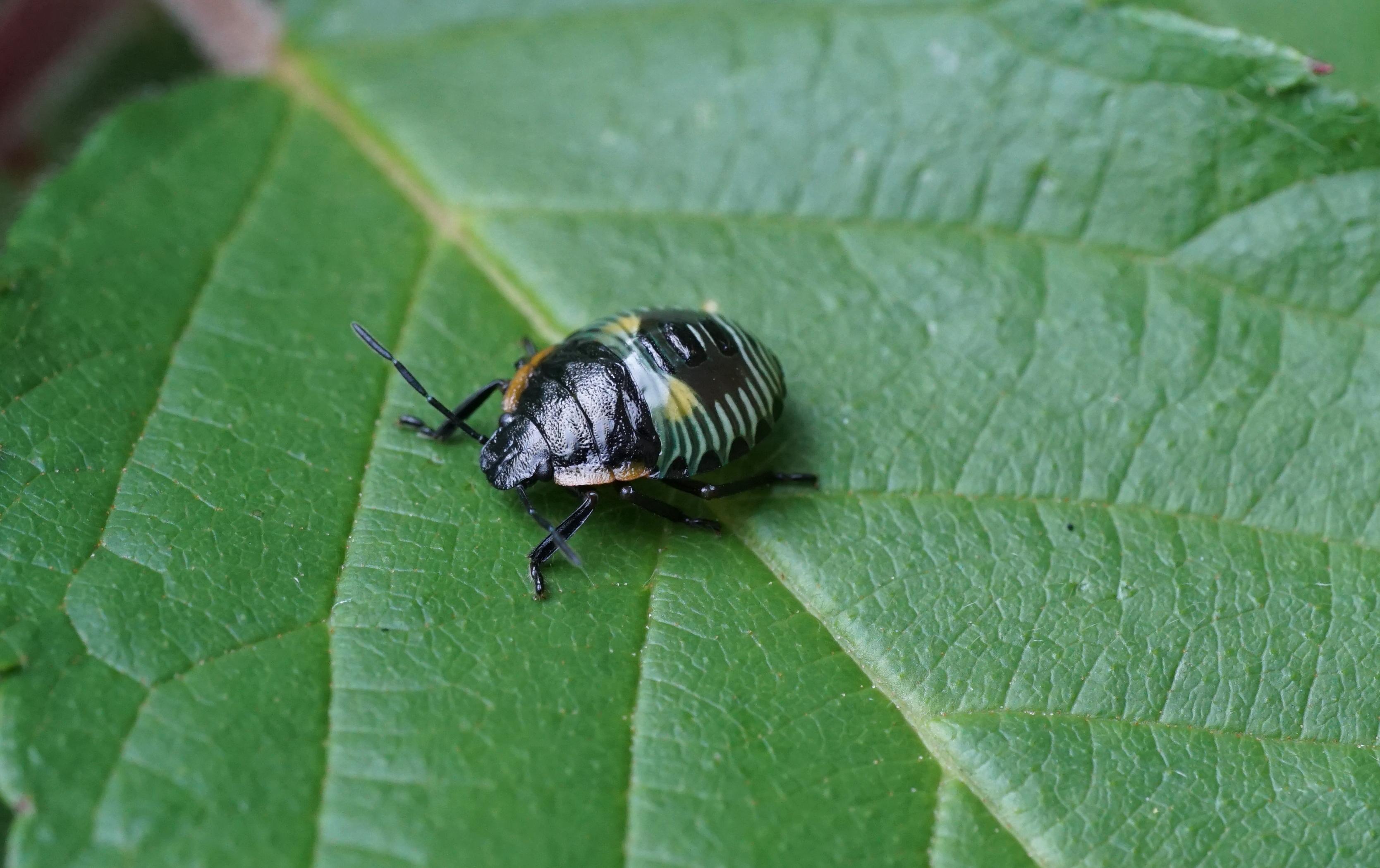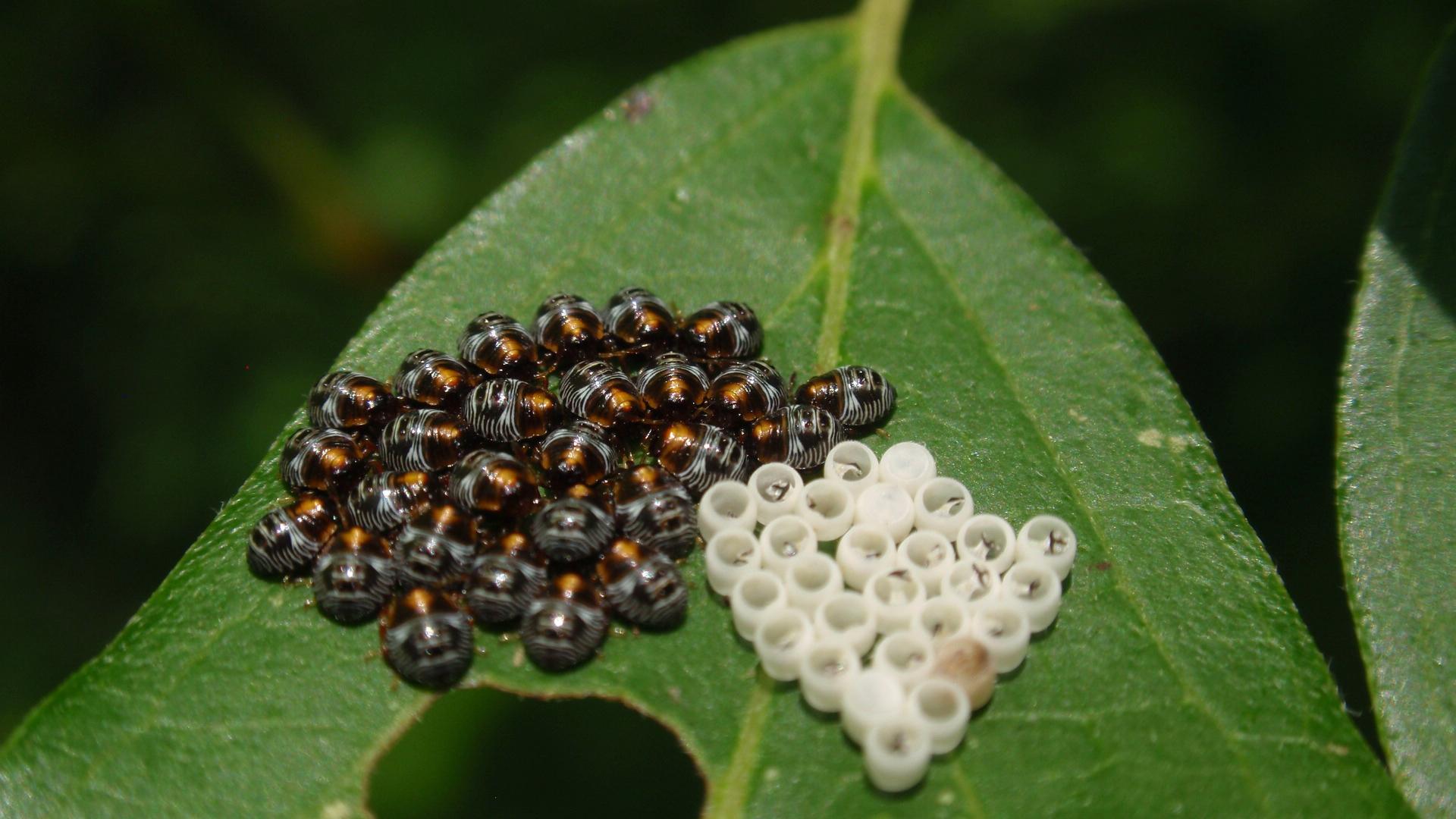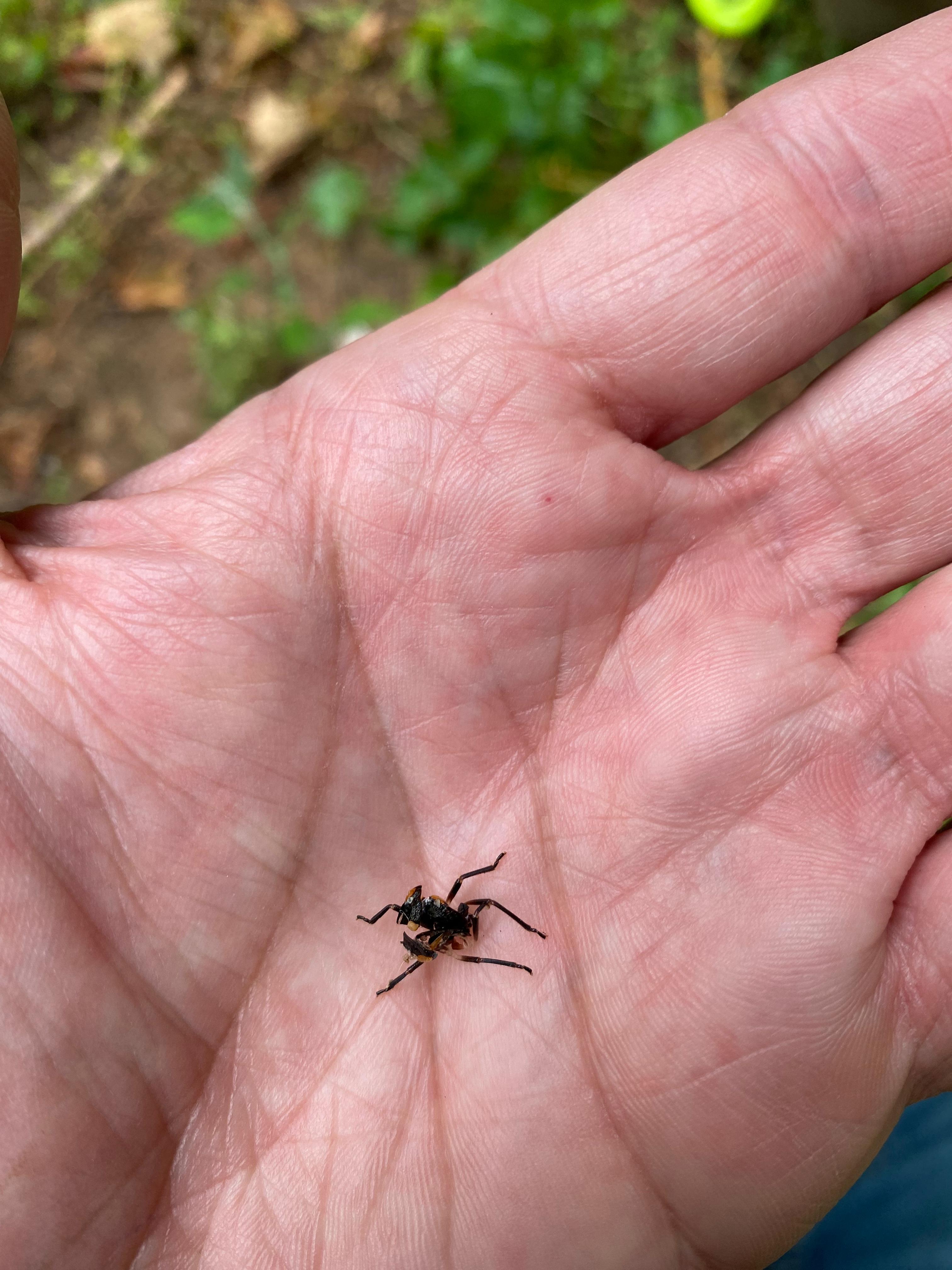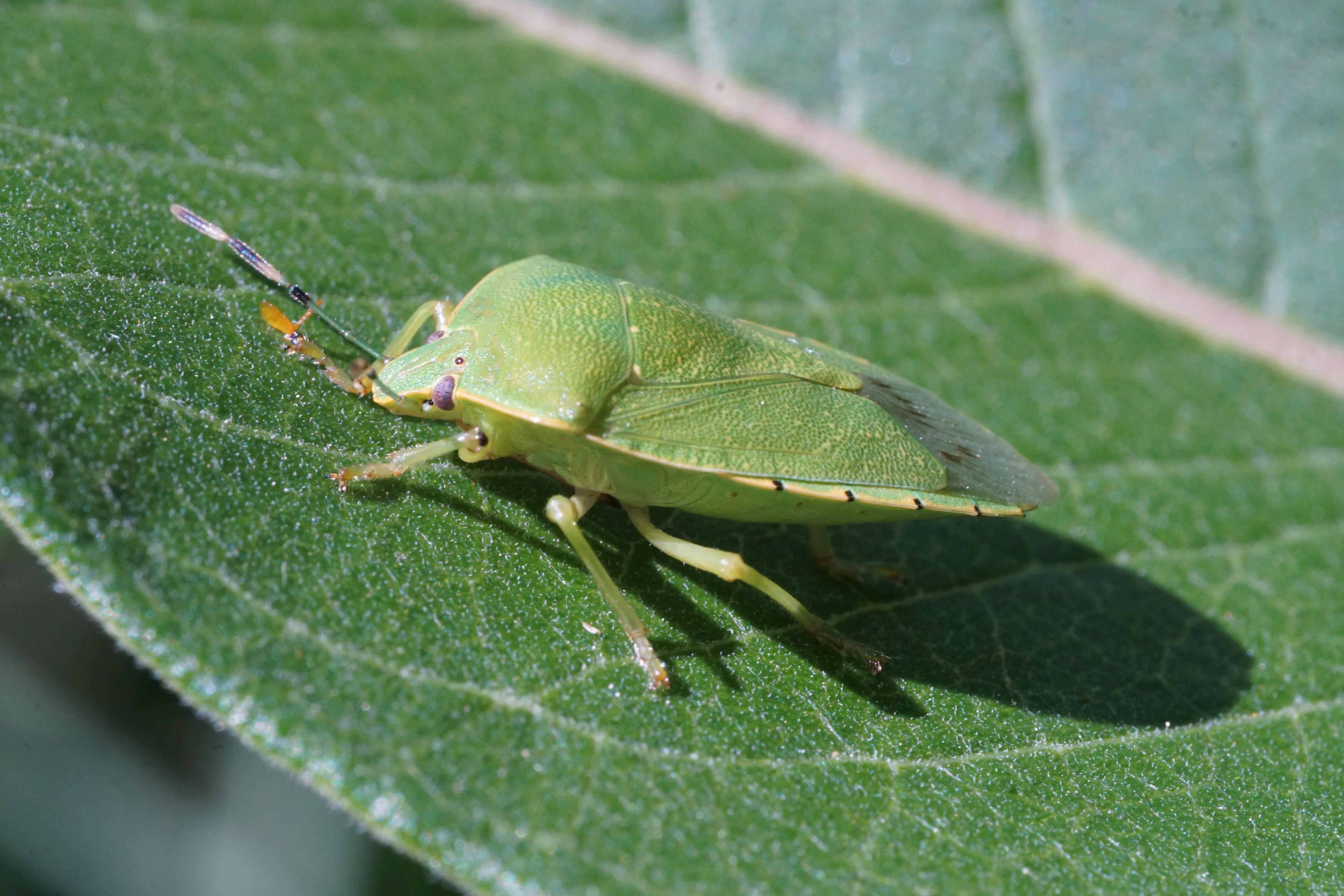This bug’s stink is worse than its bite
Green sting bugs may appear in large numbers, but generally don’t cause significant damage in Michigan gardens and landscapes.

The green stink bug (Chinavia hilaris) is one of the most common large stink bugs that occurs in Michigan. They are a native Michigan insect, not to be confused with the brown marmorated stink bug (Halyomorpha halys) or the southern green stink bug (Nezara viridula). The adults are green and 13 to 19 millimeters (mm), or 0.5 to 0.75 inches, long. The immature stages (nymphs) of the green stink bug have rounded bodies and they range in size from 1.5to 13 mm (1/16 to 1/2 inch). The nymph’s colors change with each molt as they mature, starting out mostly black with orange markings and gradually developing more green markings as they mature. The final immature stage is mostly green with orange markings.

Green stink bugs feed on hundreds of wild and cultivated plants and they can be a minor pest of green beans, dry beans, tomatoes, apples, peaches and cane berries. They overwinter as adults in wooded areas under leaf litter and in other sheltered locations. In the spring, as temperatures warm, they begin to look for food and mates. There is only one generation per year in Michigan, but the overwintering adults can live for up to two months following spring emergence. During this time, they will feed on a variety of plants and use their wings to travel up to several miles in search of food and egg laying sites. Early season feeding by adults in orchards can cause fruits like apples and peaches to develop catfacing injury. After mating, they prefer to lay eggs on wild trees and shrubs (e.g., elder, basswood, brambles, wild cherry and dogwood). Eggs are barrel-shaped and laid in clusters on leaves or stems of plants.

Green stink bug nymphs may pass unnoticed as they feed on wild and cultivated hosts until late summer when they make their final molt into the adult stage. The late-stage nymphs and new adults are often the most economically damaging stages as they begin to appear on cultivated plants in July or August. They can damage developing seed pods on green beans, as well as mature fruit such as tomatoes, peaches and apples.

To feed, green stink bugs use a piercing-sucking mouthpart that penetrates plant tissues and injects digestive fluid, damaging plant cells and causing lesions, necrosis and other localized damage. They are also able to transmit a yeast (Eremothecium coryli) that can cause yeast spot disease in beans and fruit rot in tomatoes. Following late season feeding, overwintering adult green stink bugs will migrate to wooded areas to find shelter until the following spring.

Michigan hosts multiple stink bug species and many of them are harmless or beneficial. You can read more about beneficial predatory stink bugs in this article from Michigan State University Extension: Michigan insects in the garden - Season 2 Week 5: Predatory stink bugs. The most damaging stink bugs in Michigan are the brown marmorated stink bug (Halyomorpha halys) and the brown stink bug (Euschistus servus). For example, late-season damage to apples can be more often blamed on brown marmorated stink bug than green stink bug. However, green stink bug populations are highly variable and can sometimes be abundant in localized areas.
Small infestations of stink bugs can be hand removed and/or shaken into a bucket of soapy water. In most cases, chemical management of this species is not necessary. Stink bugs in Michigan have many natural enemies such as parasitic wasps, beetles and flies that attack the egg and nymph life stages. Use of insecticides should be avoided as much as possible to prevent disrupting natural control processes and harm to pollinating insects.
Keep an eye on your plants if they are under attack, and tailor your management decisions based on the stage of the plant and what parts are being damaged. Most stink bug damage to vegetables and fruit is cosmetic rather than fatal to the plant. Your past experience and information from this and other Michigan State University Extension resources can aid you in making appropriate decisions regarding plant protection in your yard and garden.

This work is supported by the Crop Protection and Pest Management Program [grant no 2024-70006-43569] from the USDA National Institute of Food and Agriculture. Any opinions, findings, conclusions, or recommendations expressed in this publication are those of the author(s) and do not necessarily reflect the view of the U.S. Department of Agriculture.



 Print
Print Email
Email